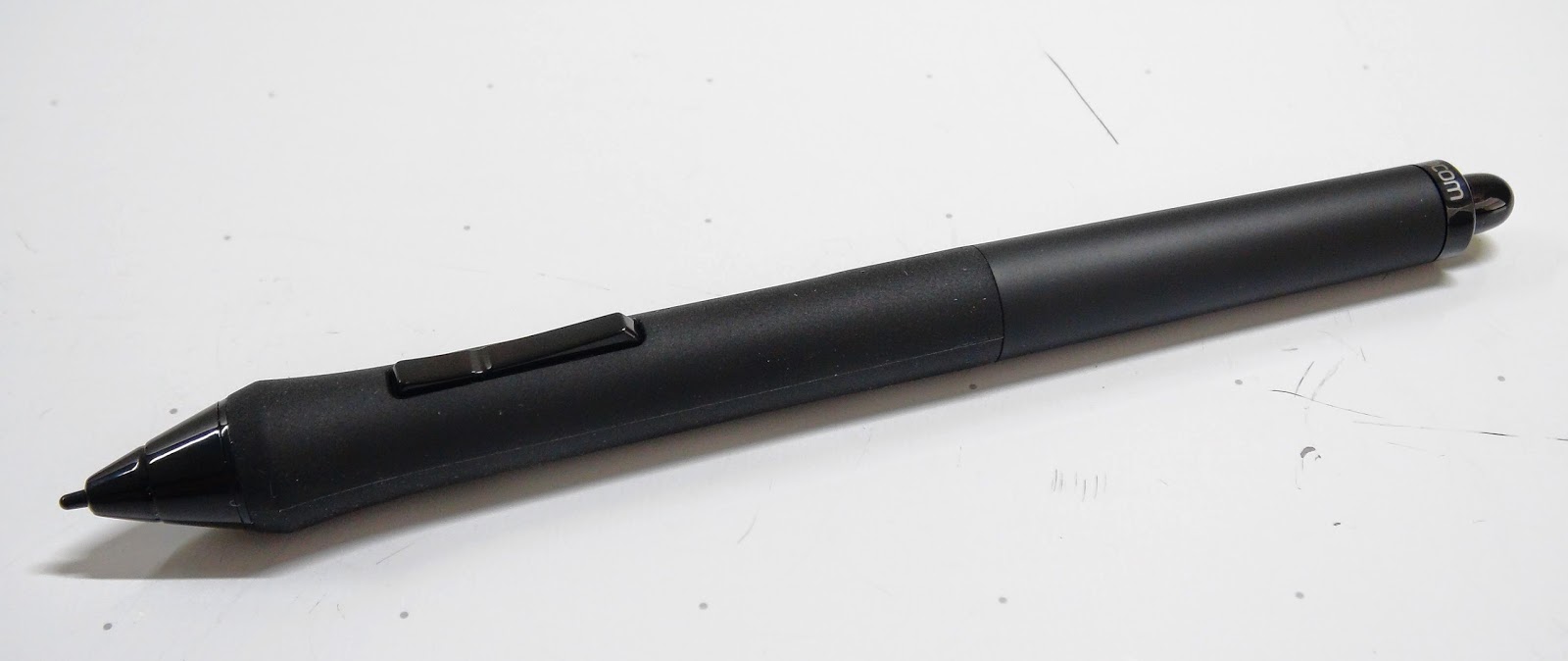For the most part I have used Wacom Penabled systems, and on rare situations have played with some Intuos tablets. The Penabled systems I have used range from 256 to 512 levels of pressure and I can notice a difference. The Intuos Pro Pen & Touch 5 has 2048 levels of pressure and I will eventually conduct a few tests to see the differences. But before conducting any tests let's go over the box contents and a few notes.
Images
Back of the boxes.
How the packaging is set.
The Intuos Pro box contents include: drivers, instruction manual, pen stand + tips, USB cable, several pressure rings, Pro Pen, and Intuos 5 tablet unit.
The Pro Pen has two side buttons, an eraser (pressure sensitive), and the tip (pressure sensitive). The grip portion is rubbery.
Several Penabled pens, N-Trig DuoSense 1, and Pro Pen.
The Wacom nibs/tips don't generally have significant differences, but the N-Trig one does stand out. The Penabled pens only work with Penabled systems--they will not work with the Intuos and N-Trig tablets. Likewise, the Pro Pen only works with compatible systems, which excludes the Penabled systems and N-Trig systems.
Wacom and N-Trig have pen models that do and do not have erasers. If "erasing" stuff with the back of the pen seems silly (a side button and the tip are more precise), then you can change their function within the included software. I would encourage people to NOT use the eraser as it can also cause scratches on drawing surfaces--the Intuos unit got some marks on the surface already because of the eraser of the Pro Pen.
The included USB cable.
The Intuos 5 tablet has a very smooth and enjoyable surface. The little white corners indicate the drawing/touching area that is allowed. The tablet allows for multi-touch (makes it a nice laptop-like giant touch pad), and you can easily enable/disable the finger touch. When the digitizer is in proximity with the tablet's surface the system gives priority to the digitizer and the touch is disabled--so you can rest your palm on the surface.
The side buttons are very neat to work with. They have touch and press state; when you touch the button the software will indicate what the function of that button is; when you press the function is activated. The ring can have different modes such as scroll, zoom, change brush size, and it can be reprogrammed.
Back of the tablet--there are no leg raisers.
The tablet can be wired or wireless (with the Wireless Kit). On the side you can observe a compartment for the wireless kit tablet dongle and a USB-PC dongle, the USB cable (used for data and for charging the wireless kit battery), and a tether spot.
This is the stand for the pen.
It also comes with several replacement nibs/tips.
There are four rings that can be used for adjusting the feel of the pen.
One ring is already on the pen.
The Wireless Accessory Kit's box contents: PC-USB dongle, tablet dongle, battery, and documents.
If you want to add the Wireless Accessory Kit you will have to remove the back panel.
With the panel removed you can identify where the wireless kit components belong.
The PC-USB dongle can be stored in the tablet, but of course this connects to your PC.
The tablet dongle has a battery indicator light (orange when charging, green when charged). There is also a on/off sync button.
The kit installed and charging. For the most part the Wireless Kit does a very good job at keeping up, but I feel that the wired method delivers slightly smoother lines and faster reaction. Of course, the wireless gives you extra freedom to move around and is quite an enjoyable experience.
Comparison with the Wacom DTU-1031 (an interactive pen-only display tablet marketed as a "signature solution" ). The DTU-1031 is a Penabled system with only 512 levels of pressure, on the other hand the Intuos has 2048 levels of pressure. The side buttons on the Intuos are way superior to those tiny buttons of the DTU-1031. I think most people will prefer an Interactive Pen Display (like the DTU-1031). However, there are so many talented artists that use Interactive Pen Tablets (like the Intuos tablet). In my case I can do most handwriting with IPDs and I find it very difficult to be efficient with the IPTs. As in the case of many crafts, initially using unfamiliar tools feels awkward, but eventually one can become very proficient.
The back of the two tablets.
The DTU-1031 has a few legs that give it a slight angle
Here are three Wacom tablets: the DTU-1031, Lenovo ThinkPad X230T, and the Intuos 5 Pro Pen & Touch. The X230T only has 256 levels of pressure, the DTU has 512 pressure levels, and the Intuos has 2048 levels of pressure. In some software the line quality can be distinguished, and in others the software can aide in smoothing line quality.


No comments:
Post a Comment